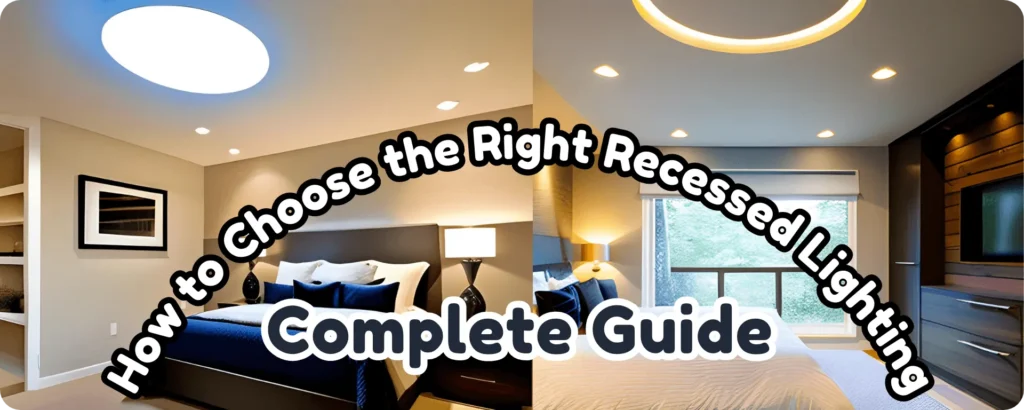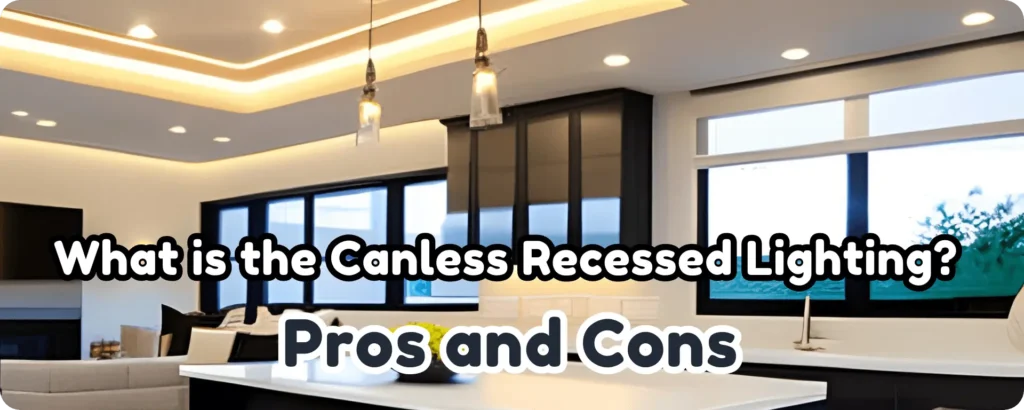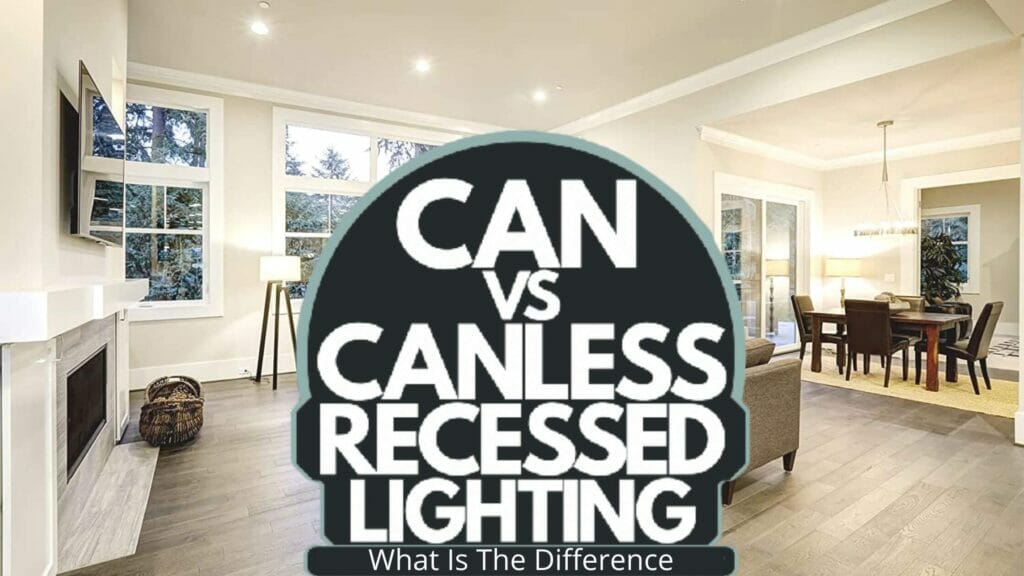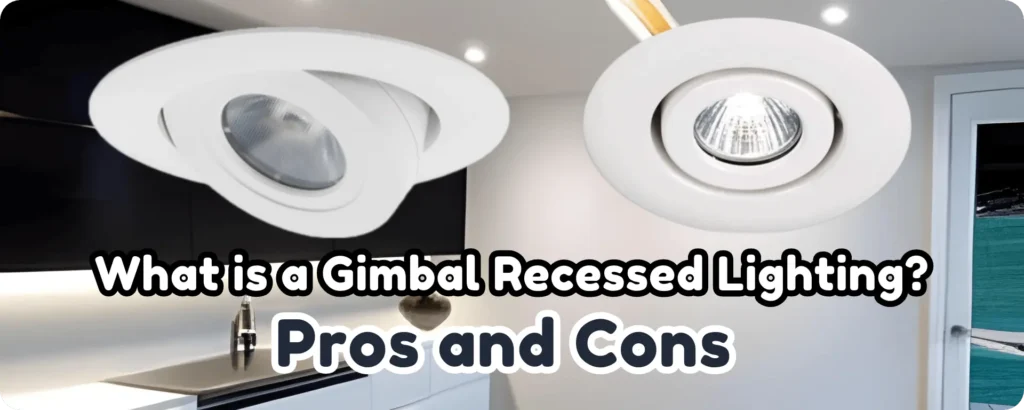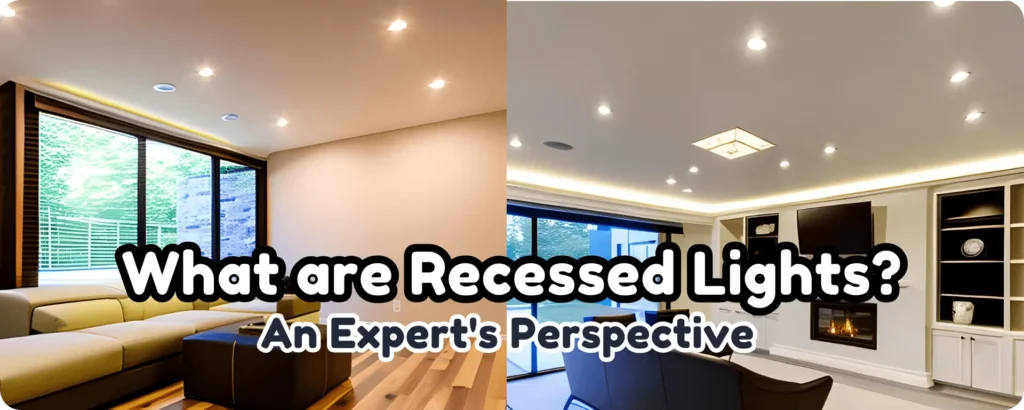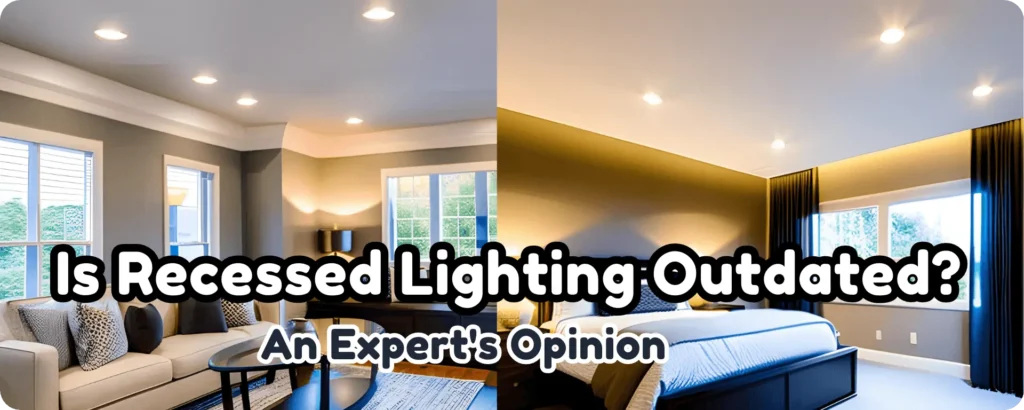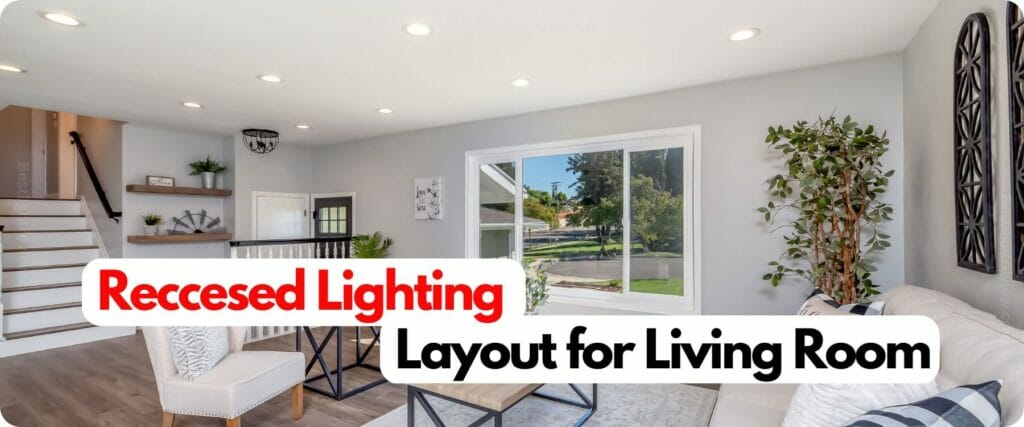

Recessed lighting is one of the most popular options for illuminating a living room. It’s stylish, energy-efficient, and can be used to create a warm, inviting atmosphere in any home. In this blog post, I’ll be discussing how to create a perfect recessed lighting layout for your living room.
Benefits of Recessed Lighting
Space-Saving Design
If you are looking to maintain a clean minimalist ceiling in places such as bathrooms or kitchens then go with can lights. As such these bulbs do not require space hence rooms look larger and less crowded visually
Versatility and Aesthetic Appeal
Recessed lighting comes in different styles and trims that can suit any interior design. Hence, from vintage to modern or eclectic décor theme recessed lighting will blend in harmoniously.
Enhanced Ambiance
Recessed lighting offers even light that is adjustable to allow for different moods. You can easily switch between bright, functional lighting and a softer, more relaxed glow using dimmers.
Planning Your Recessed Lighting Layout
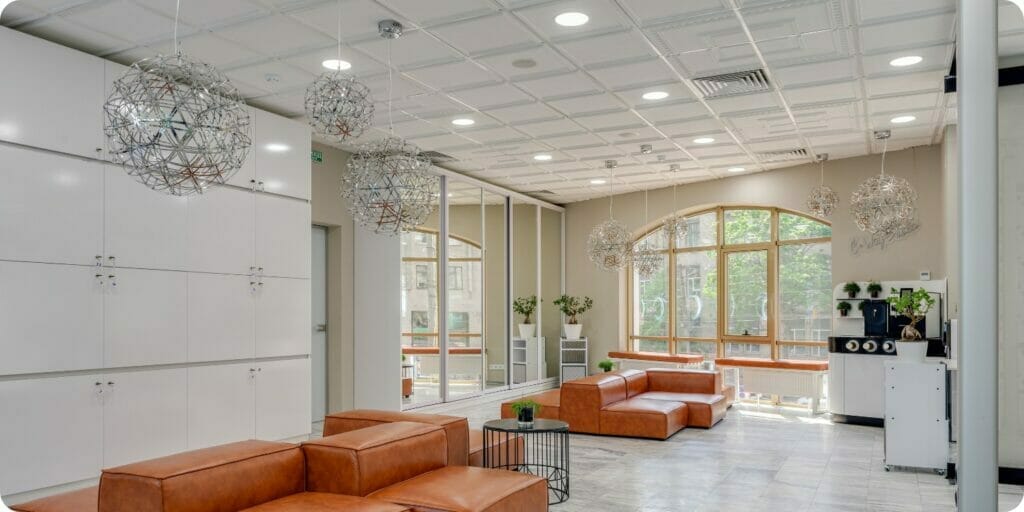

Assessing Your Living Room Space
Start by looking at the size and shape of your living room. Measure it carefully and note any architectural details such as beams, alcoves, or built-in furniture that could affect your lighting plans.
Determining the Purpose of Each Area
Think about how you want to use different spaces in your living room. You might have a reading nook, a TV viewing area, or a place for socializing. The settings may need different lights.
Considering the Room’s Architecture
Take into consideration the height of the ceiling and existing light fixtures. Extra powerful lights or additional fittings may be needed for higher ceilings to ensure adequate illumination.
How to Create a Perfect Recessed Lighting Layout for Your Living Room
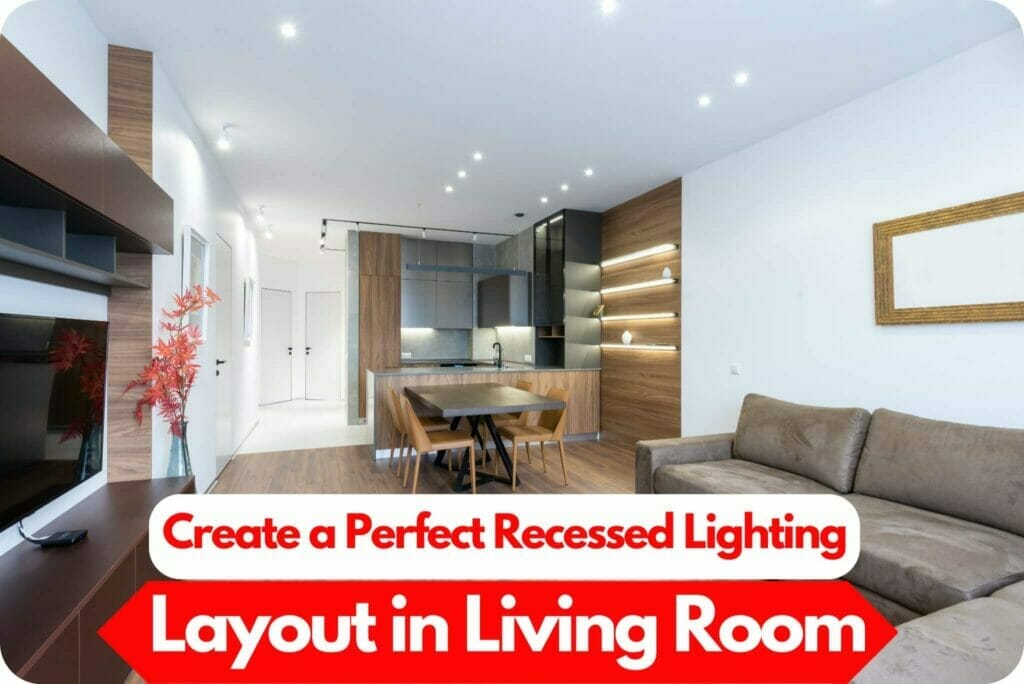

Recessed lighting is normally installed in the living room once you have chosen a type, you will be able to create a good recessed lighting layout. You should start by determining the room’s measurements and establishing how many light fixtures will be suitable for it. After that, you can choose an optimum distance between bulbs and determine where to place them around the room.
How to Measure for Recessed Lighting in the Living Room
If you’re thinking about adding recessed lighting to your living space, then you must measure out the area to decide on the best places. In this regard, it is a great idea to divide the ceiling height by two. For each lamp, this division would correspondingly yield an ideal spacing.
Thus if you have an 8-foot-high ceiling in your living room, dividing that number by 2 gives you 4 feet. Ideally, each bulb should be 4 feet apart from one another allowing for ambient lighting of the whole house.
Other considerations like the size of the living room as well as the purpose of illumination might affect how wide apart or close together one chooses to space their recessed lights.
How Many Recessed Lights Do I Need Living Room
The next step after calculating the number of fixtures needed in your space would be estimating how many lights will provide sufficient general illumination as well. Generally, having one recessed light every 4-6 square feet is recommended.
Recessed Lighting Distance from Wall
The various factors determine the spacing between a wall and recessed lighting. These include ceiling height, room size and light purpose. Basically, it is recommended that recessed lights should be placed about 2-feet away from walls, and approximately 4 to 6 feet apart for an eight-foot standard height ceiling.
To create more even and balanced lighting effects for higher ceilings, you may either expand or move the recessed fixtures towards the walls. But, ensure that the lights are not too close to the walls as this can result in “wall washing” leading to shadows and uneven illumination.
Safety and Electrical Considerations for Installing Recessed Lighting
It is important that you consider electrical and safety issues before installing your recessed lighting in your living room.
Firstly, make sure you have properly insulated the area you intend to install these lights into place; otherwise, fixtures will be rated at voltages that don’t match them.
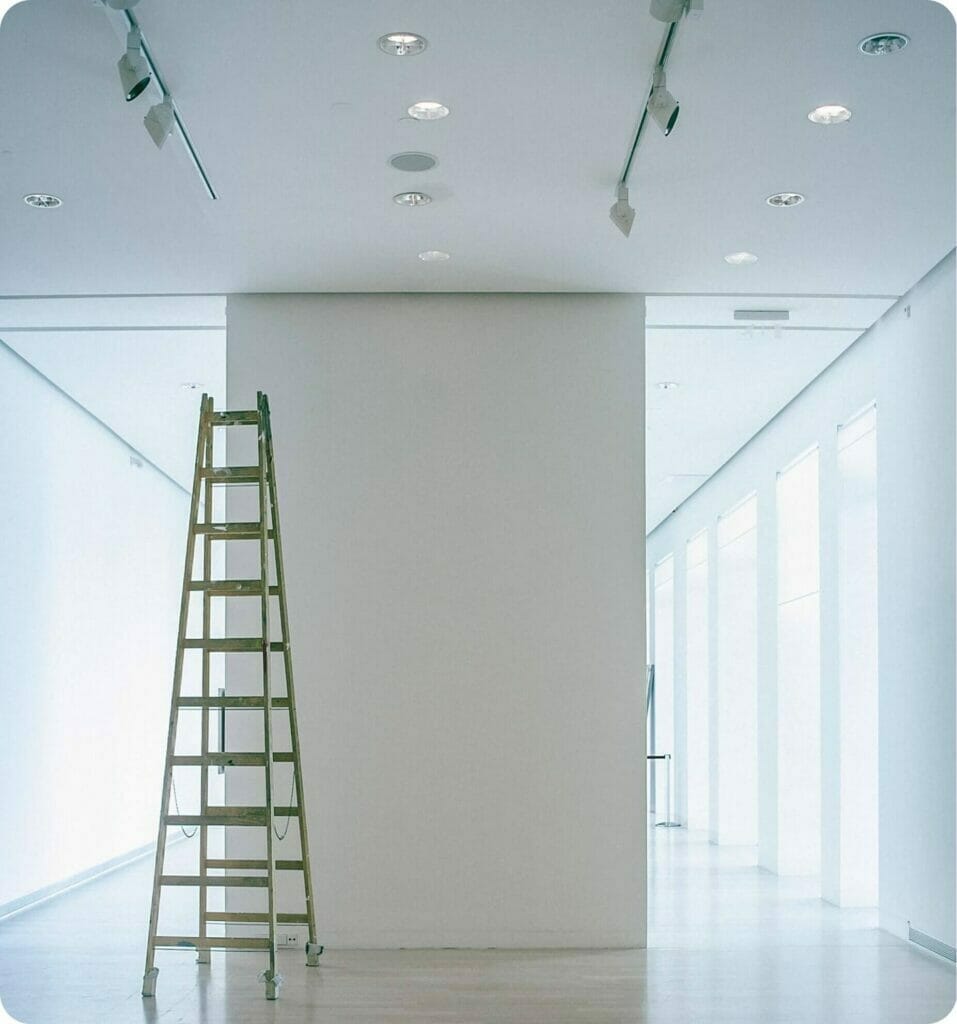

Second, make sure you use the right type of wiring, such as Romex or NM-B. Finally, make sure you turn off the electricity before you start working on the wiring.
Installation Tips
Wiring and Electrical Considerations
Check whether your home’s electrical system can bear the extra burden of recessed lights. It would be best if you have an electrician come around so that he/she can advise you on how not to overload these circuits.
Safety Precautions
One should always observe safety regulations while installing recessed lighting devices. Turning off the power at the circuit breaker before starting any electrical work and using a voltage tester will help make sure there is no electricity running through the wires.
You save money with DIY installation while hiring a professional ensures a well-done and safe job. In case you’re uncomfortable with electrical work, it’s advisable to call in an expert.
Conclusion:
Designing an ideal layout for recessed lights in your living room can be quite challenging. Although it might seem like a lot of work at first, with some careful planning and by using suitable materials you could have created an inviting space that would serve as a perfect backdrop for any activity. By following steps outlined herein blog post, your living room could have a stunning layout featuring recessed lighting. It helps create varying moods within many living rooms since it is crucial part of most dwelling places.

